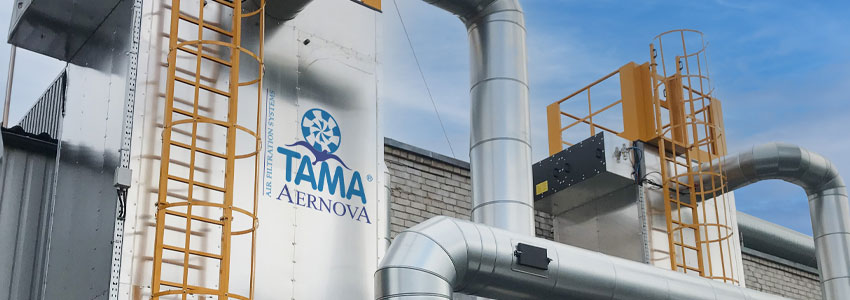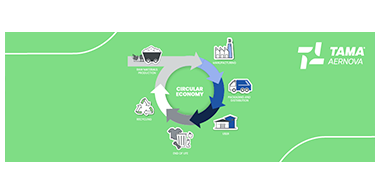
Renewable energy from biomass: how to deal with combustion pollutants
Biomass is a significant source of clean energy, which is produced by combustion in power plants and facilities dedicated to its processing. Defined as any degradable organic material such as wood, agricultural and food waste, and dedicated crops (Directive 2009/28/EC of the European Parliament), it is one of the most versatile alternatives to fossil fuels, perfectly in line with a circular economy model based on the recovery and reintegration into the production cycle of production waste. It's not surprising that this sector is in full development, although not without controversy and opposition.
The combustion required for biomass energy conversion leads to the production of pollutants and toxic volatile compounds, nestled in the dense and dark smoke often seen rising from smokestacks and industrial chimneys.
According to data from Terna, the company that manages the Italian electrical grid, sustainable energy contributed 44.3% to the national overall demand in June 2023. The hydropower sector leads the way, followed closely by photovoltaic and wind power, and the contribution of biomass is increasing, accounting for approximately 12% of the total kWh produced from renewable sources.
In recent years, interest in biomass as a source of energy supply has been reawakened by issues linked to the environmental and economic sustainability of fossil fuels; matters that relate as much to the limited availability of deposits as to their distribution across the planet. In fact, biomass promotes energy decarbonization and has a partial impact on the levels of greenhouse gases released into the atmosphere, as the amount of carbon dioxide set free during combustion and transformation processes is less than for fossil fuels; equal to the amount of CO₂ originally contained in the raw material, it is on average resorbable within an ordinary photosynthesis cycle.
However, as pointed out earlier, to minimize the risk of environmental damage, biomass processing must occur in thermal power plants or dedicated industrial facilities equipped with the necessary technologies to manage the transformation of organic matter into energy and the treatment of polluting emissions released during combustion.
FROM TAMA AERNOVA, AN INNOVATIVE TECHNOLOGY FOR TREATING POLLUTANT EMISSIONS AND DUST
Thermal and electrical energy derived from biomass can be exploited in various processes, ranging from self-consumption to the production of advanced biofuels. In Italy, there are approximately 2700 active biomass facilities (Terna data, 2023), mainly concentrated in Lombardy, Veneto and Emilia Romagna. Several small and medium-sized industries have included these types of facilities into their strategies to reduce energy costs, contribute to ecological transition and align with the directives of the international scientific community.
To be legally authorized, all biomass facilities, regardless of their size, must be equipped with systems to limit the release of pollutants, such as volatile organic compounds and harmful dust, including the dreaded particulate matter (PM), into the atmosphere.
TAMA AERNOVA's biomass sector specific solutions can solve many of the critical issues associated with industrial scale use. Thanks to the expertise of an engineering staff who makes the best technology available, our company can provide solutions that range from individual components to the design of the entire fume treatment line, complete with cyclones, filters and acid gas reduction systems.
The smoke first enters the separator cyclone, which, by exploiting acceleration and centrifugal force, separates air and particles, reducing the amount of circulating dust and protecting the filter from excessive residual loads. Baghouse filters, metallic cartridge filters and ceramic candle filters installed at the system’s base are configured according to the specific effort in terms of flow volumes, temperature, dust quantity and size, and involve the use of specific construction materials in relation to the pollutants to be treated.
The cleaning of the filter elements is managed by monitoring pressure drop, an operation that promotes lower compressed air consumption and longer-lasting elements, two factors which translate into savings by delaying product obsolescence and reducing spending on the electricity that powers the line.
DeSOₓ (desulfurization) and DeNOₓ (denitrification) inerting systems, through the addition of basic substances such as hydrated lime, sodium bicarbonate, activated carbon, and urea/ammonia, allow the reduction of acid gases generated during combustion processes and the reduction of heavy metals in contaminated raw materials.
TAMA AERNOVA systems are therefore designed to optimize the entire process and minimize the impact of environmental pollutants, confirming our company's interest and commitment to a more sustainable and responsible world.



Commentaires